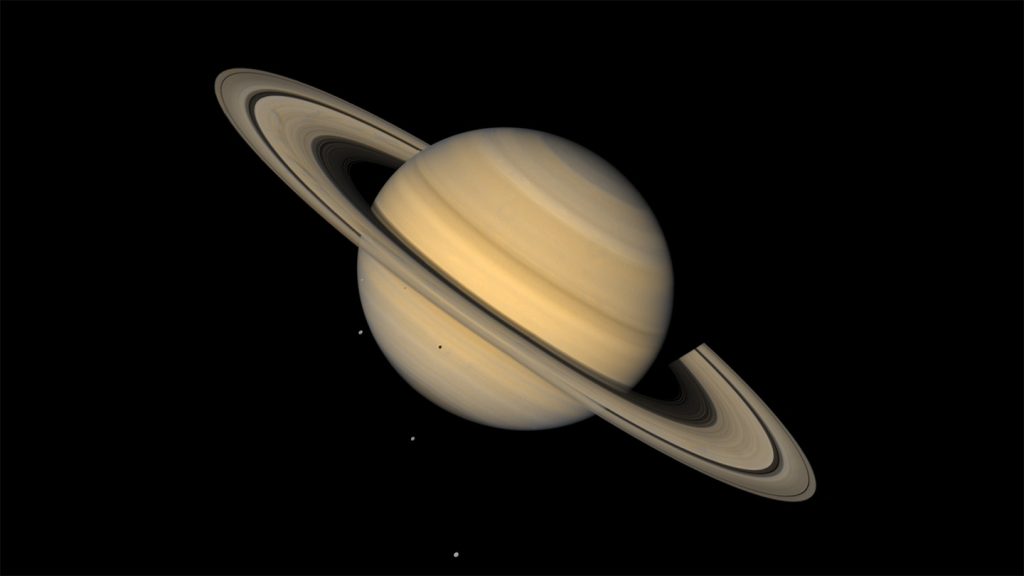Astronomers have discovered an asteroid that is a Saturnian Trojan, orbiting 60 degrees ahead of Saturn in its orbit around the sun. Trojan asteroids are objects that share an orbit with a planet, and previously, similar asteroids have been found for the other three giant planets. The newly discovered asteroid, named 2019 UO14, was first observed in Hawaii in 2019, and further observations and measurements confirmed its Trojan nature. This asteroid is about 13 kilometers across and is orbiting Saturn around 60 degrees ahead of the planet.
The first Trojan asteroid was discovered by German astronomer Max Wolf in 1906, orbiting around 60 degrees ahead of Jupiter. Since then, thousands of Trojan asteroids have been found orbiting Jupiter, some ahead and some behind the planet. The upcoming NASA spacecraft Lucy will be visiting eight Trojan asteroids between 2027 and 2033. Trojan asteroids also exist for Uranus, Neptune, Earth, and Mars. Finding these asteroids requires numerous observations over an extended period to accurately determine their orbits.
Saturnian Trojans have been long predicted but were challenging to find due to the unstable nature of their orbits. Saturn’s proximity to Jupiter results in gravitational interactions that destabilize the orbits of Saturnian Trojans. In the case of the newly discovered asteroid, it has only been a Trojan for about 2,000 years and is expected to remain so for another 1,000 years. Prior to becoming a Trojan, the asteroid was likely a centaur, an asteroid moving within the orbits of the giant planets.
The discovery of a Saturnian Trojan asteroid opens up the possibility of finding more such objects around Saturn. Scientists believe that there may be more Trojan asteroids in the vicinity, possibly a few, but the newfound asteroid is unlikely to be the only one. The identification and confirmation of a Saturnian Trojan provide insights into the dynamics of the solar system and the interactions between planets and small bodies like asteroids. Further research and observations will help to better understand the origins and evolution of Trojan asteroids in the Saturnian system.


